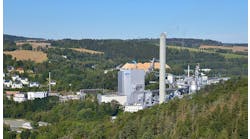Raj Batra, vice president of Siemens Energy & Automations Automation and Motion Division, discussed the global trends driving industry in his keynote address to assembled users and guests at the Siemens Automation Summit and Users Conference this week in Chicago.
Batra called the current era one of open innovation, calling out Wikipedia, Mozilla and the Siemens User Advisory Board as agents of what he called distributed co-creation.
At a time of expensive power and global pressures, how does technology help you run your plants more profitably and safely and in a way that is sustainable for the environment? Siemens Raj Batra called on Automation Summit attendees to network with peers from other industries to gather fresh perspectives.
The industry diversity of this conference is so important to us because it lets us explore and get fresh perspectives on creative solutions and alternatives at the intersections of these industrial landscapes, he said. That, he added, brings us to the theme of this years conference: Expand your world of automation during a time of great global change.
The price of energy is making us rethink our relationship with fuel and power in our daily lives and our work, he said. Self-sustaining offices and homes and systems that can sell power back into the grid truly are within reach. Even glass and cement production now can make great strides with waste-heat-recovery systems.
The pace of globalization is absolutely incredible, marveled Batra, noting another key influence. China and India, the bogeymen of U.S. manufacturing barely a year ago, now are themselves being challenged by lower-cost countries such as Vietnam.
The safety and security of our plants is certainly at the forefront of these trends, and many of you are under mounting pressure to ensure your plants are safe and your products meet the necessary standards for quality and purity, continued Batra.
Batra identified asset management as another huge trend that touches everything from lowering operating costs and maintaining uptime to integrating systems and networks from different vendors and even different eras, all to achieve increases in productivity.
So at a time of expensive power and global pressures, how does technology help you run your plants more profitably and safely and in a way that is sustainable for the environment? asked Batra. These are topics that stand out in the daily news and confront you every day, but theyre also driving our agendas and priorities and forcing us to take a hard look at how we run our plants and decide on the technologies that are in them.
Summarizing the companys R&D agenda, Batra said Siemens bases its core research on key economic trends that are just forming or already in play, so the company can engage in market-ready research with universities, the private sector and in its own facilities. Our own research initiatives involve 32,500 employees, of which 23% are in the U.S., 12% in Asia and 36% in Germany, with an annual investment of US$ 6.1 billion, which make us the largest R&D investor in electrical and electronics engineering globally. This, added Batra, is part of the very fabric of Siemens.
Its a staggering fact that motors driving conveyors, belts and pumps are responsible for 70% of all industrial power consumption globally, explained Batra. And yet until recently, most plants didnt pay much attention to this because the cost and the price of energy made it less than 2% of overall operating costs. Unless you were smelting aluminum or making glass, said Batra, this just wasnt on the radar. But now making use of software that can analyze motor efficiency is an important tool for any plant, and Siemens now has products that could save anywhere between 10% and 50% of power consumption, stated Batra. And with 20 million motors in use globally, optimizing their performance could have huge influences on CO2 emissions globally.
Batra also commented on Siemens efforts to help manufacturers migrate legacy systems successfully with levels of security that couldnt be envisioned 20 years ago, and on the companys ability to integrate systems from multiple vendors, some of whom are no longer around. He pointed to Astra-Zeneca as having modernized and added functionality to a 20-year-old clean-in-place (CIP) system for which parts were hard to find and for which compliance was becoming more difficult. This was accomplished in part with Siemens approach to provide a safe migration strategy that has a stepwise, adaptable and flexible approach.
Near the end of his address, he pointed to the Profibus and Profinet protocols as enablers of a continuing communications revolution. Batra looked back a decade asking, Did you imagine youd sit in a coffee shop with your laptop open and have the capability to view critical KPIs wirelessly? Thats what I mean when I talk about the power of network topology.




